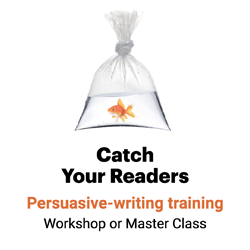External transitions move readers from section to section
Talk about a transition. Here’s how author Erik Larson ends one chapter of Devil in the White City: Murder, Magic, and Madness at the Fair That Changed America:

Transitions like Larson’s thrust the reader forward — from the end of one section to the beginning of the next. And that’s the job of external transitions: keeping the reader’s attention beyond a natural stopping point.
That means external transitions need to work harder than internal transitions, which just move the reader from sentence to sentence or paragraph to paragraph.
To write great external transitions:
1. Create cliff-hangers.
The best external transitions hint at what is to come. They keep the reader moving along by promising that something fascinating is just around the corner.
Larson is a master of the external transition. Here are two more chapter enders from Devil in the White City:
Ira Glass uses the same approach for “This American Life” station breaks. Here’s how he propelled listeners forward in the radio program’s legendary piece about the housing crisis, “The Giant Pool of Money”:
Let’s pause and ponder that for a minute too.
Of course, you have to make good on the promise of these external transitions. Cliffhangers followed by nonevents lose reader interest — and respect — in a hurry.
2. Model the mystery writers.
One way to polish external transitions is to study the last sentences in chapters of mysteries. “The Writer’s Guide to Hardy Boys Rack Books,” for instance, includes this excellent advice:
I think of section enders like these as “But that was before we found the body in the bathtub” transitions.
The idea is to write something that’s so provocative that the reader can’t stop reading. You want readers to think, “I’ll just read until they find that body in the bathtub.”
A series of small promises from you (“A body in the bathtub is just around the corner”) and small commitments from your reader (“I’ll just read until they find it”) might just get your tired, busy, distracted reader to read to the end.

Leave a Reply